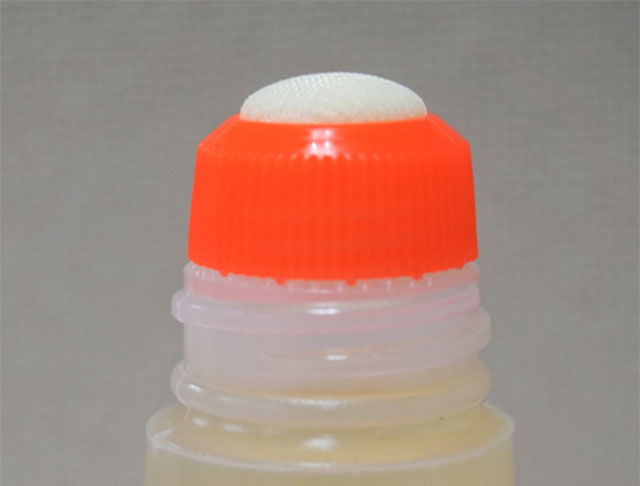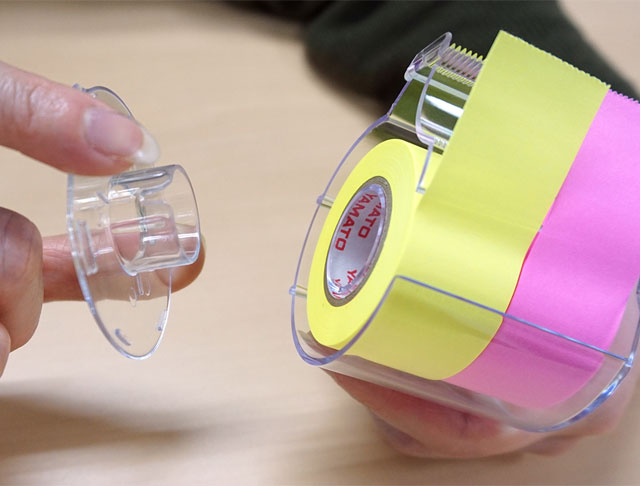Yamato Nori (Starch Paste)
-
- What is main ingredient?
-
Tapioca starch and water.
-
- I have an allergic constitution. What kind of starch is Yamato Starch Paste made from ?
-
Yamato Starch Paste is made from 100% tapioca starch.
-
- What is the difference between KOUSAKUNORI and YOUJI NORI?
-
Starch concentration is different.
It is easy to apply smoothly even for small children.
-
- Are there any problems to mix Yamato Starch Paste and other companies’ paste together?
-
Do not mix together. It may tend to deteriorate such as to be watery, or harden.
-
- Are there any problems to dilute Yamato starch paste with water?
-
It causes to weaken adhesiveness. Glue is best condition as it is for use.
Arabic Yamato (Liquid Glue)
-
- What is main ingredient?
-
PVAL(Polyvinyl Alcohol) and water.
PVAL is one of the synthetic resins made from oil. (PVA is same as PVAL.)
-
- What does “Arabic” of “Arabic Yamato” mean?
-
Liquid glues mainly made from sap of Gum Arabic called “Arabica Glue” until the middle of 1960s. Its bottle was convenient to use: turn the bottle upside down, then glue was soaking through its mesh without smearing hands. Yamato combined this convenient bottle concept, advantage of synthetic resin glue, and special sponge cap developed by Yamato.
This is why Yamato named this product as “Arabic Yamato”.
-
- When was “Arabic Yamato” launched?
-
“Arabic Yamato” launched in Oct.1975. Since then, we have been improving and making it better. Arabic Yamato, our long seller liquid glue, has been added the various types according to various purposes.
-
- What is the feature of Arabic Yamato?
-
Arabic Yamato is so special with its sponge cap.
Hands won’t be smeared with glue and you feel like using your fingers to apply. Balance between Sponge cap and quality of glue itself is stood with well accumulated know-how and technically hard to imitate. Quick-drying and strong adhesiveness.
Eco-friendly type “ECOMMU” made with more than 70% recycled materials, are also available. ECOMMU is with red cap and its item cord starts with the character E.
-
- A child accidentally took a lick.
Is it OK? -
Gargle with water. There is no problem if it is small amount. If the child looks bad, see a doctor just in case. Storage away from small children, and only use for gluing.
- A child accidentally took a lick.
-
- What should I do when glue get into my eyes or stick to my skin?
-
When glue get into your eyes, do not rub eyes and wash off with a lot of clean water. Glue attached with skin can be washed off with water. Though in rare cases, it might cause itch or rash for delicate skin.
-
- How can I remove the glue when I stick glue to clothes?
-
For washable clothes, soak in warm water and wash off lightly with hands. Glue can’t be washed off with dry cleaning.
When take these clothes to laundries, tell them that PVAL is attached.
-
- What is the special instruction for use?
-
Because of strong adhesiveness, glue is easy to dry. To avoid drying, firmly tighten the outer cap after use. Not using for a long time may cause sponge cap harden and outer cap may be hard to open. Recommend “Bottom-Up” type (NA-60) for light users, as its sponge cap is less likely to dry than other types. For heavy user, refill types (NA-960, NA-48) are recommended.
-
- Sponge cap got hard and glue won’t come out.
-
Take off the sponge cap from the bottle and soak in hot water about 50 ℃/120 ℉. (Be careful for burning.) Take off the sponge from sponge cap and wash off with hands lightly. For solidified glue inside the outer cap, treat in the same way or scape out with tools such as spoon.
-
- I refill glue with NA-960 and reuse same glue’s bottle for a long time. Recently, sponge cap and outer cap become hard to tighten and tends to be solidified.
-
The screw thread may be worn then hard to tighten these caps. Please purchase a new one.
-
- I bought new one but glue won’t come out.
-
Before using, take off blue plug. When refill with NA-960 or NA-48, please cut the tip of the nozzle before use and close with the attached spiral cap.
And tighten the sponge cap with the attached *opener. *opener
*opener
-
- When I open the outer cap, the sponge cap loosen together.
-
Make sure glue is not stuck around sponge cap or inside of the outer cap. Take off sponge cap from the bottle and wash off with warm water, then tighten firmly again as the sponge cap fit tightly with the gutter of the outer cap. (NA-60 is reverse screw type preventing from loosening both caps together.)
 *screw
*screw
-
- Glue hardened like gel in the bottle.
Are there any solutions? -
It has deteriorated. Recommend not to use.
- Glue hardened like gel in the bottle.
-
- Glue has frozen.
-
Try to melt with room temperature water.
It may not be entirely recover because of deterioration.
-
- Are there anything I should be careful when applying glue to thermal paper?
-
Thermal paper is not suitable for preserve itself. Printing on thermal paper may disappear with moisture, light, lapse of time, etc. When you apply glue, avoid printed area.
Glue Stick
-
- Does thermal paper turns black with glue?
-
There are various kinds of thermal paper. Please try out before use.
-
- I want to use up glue to the bottom hosting plate.
-
Glue in the bottom hosting plate is an anchor for use up glue. Scrape out with tools such as toothpick.
-
- Glue’s color is fading. (Blue color glue stick.)
-
Color would be disappearing when it is exposed to the air. Do not leave the cap open.
Non Slip (Fingertip moistener)
-
- I put it on fingers but difficult to flip papers.
-
Put it on fingertips and rub them well before use.
Memoc Roll Tape (Self-Stick Paper Tape)
-
- With copy machine, is shadow of tape printed too?
-
It depends on types of copy machines. Please try out before use.
-
- How can I refill tapes?
-
Take off the lid from one side of the cutter and insert a refill tape.
 *Lid of the cutter side
*Lid of the cutter side
Vinyl Tape
-
- Is there anything I should be careful to store vinyl tape ?
-
Keep away from direct sunlight.
Use in a temperature between 0℃~60 ℃/32℉~140℉.
-
- What thickness of tape?
-
The thickness is about 0.2mm.
-
- Is this electrical insulating tape?
-
Yes.
Glass Deco
-
- I want to dry Glass Deco quickly.
-
Because of its characteristic, dry Glass Deco naturally.
-
- Glass Deco is attached to my clothes.
-
Wash off with water immediately.
It will not wash off after hours. When Glass Deco dries up, consult the laundries. (Tell them acrylic resin have attached.)
-
- After sticking long time, I cannot take off the artworks from window.
-
Peel off the artworks little by little with thin tools such as a spatula in a room temperature (25℃/77℉)and humidity. Be careful the artworks begin melting when it is warmed or breaks when it is cooled.
-
- I want to put the artworks on a glass candle stand.
-
The artworks may be softened and begin to melting. Not attached on high temperature place such as car windows.
-
- I want to put the artworks outdoors.
-
Not recommended. It may cause to be color fading or degradation.
-
- How much does it draw bordering line?
-
When using as a bordering, amount of use is 1ml for 60cm long.
-
- Are there any instructions about objects put the artworks on?
-
When you put your artworks on the objects made with materials such as acrylic, polyethylene, polyvinyl chloride and ABS resin, it would be difficult to peel off your artworks.
 Starch Paste
Starch Paste
 Liquid Glue
Liquid Glue
 Glue Stick
Glue Stick
 Finger Moistener
Finger Moistener
 Memoc Roll Tape
Memoc Roll Tape
 Vinyl Tape
Vinyl Tape
 Grass Deco
Grass Deco